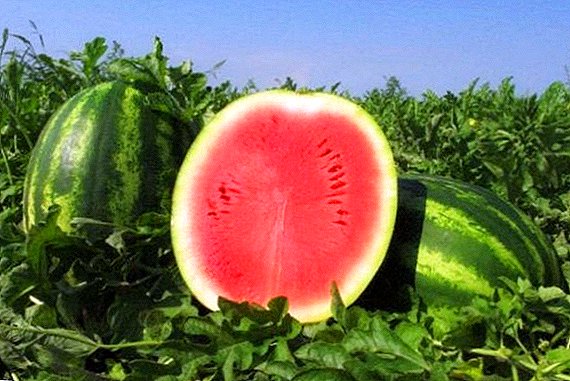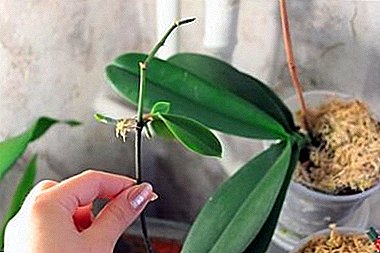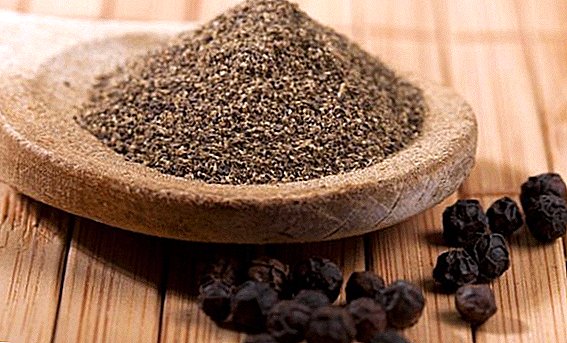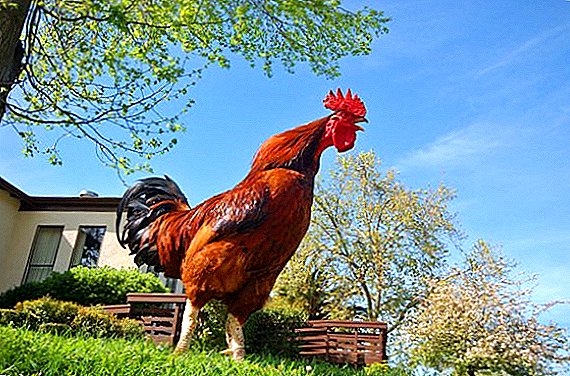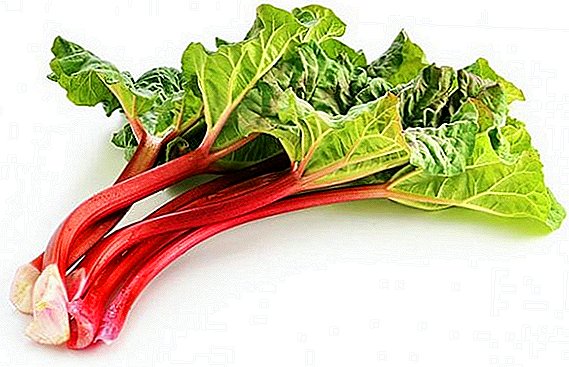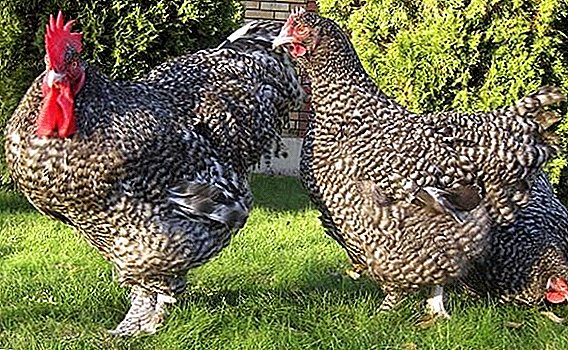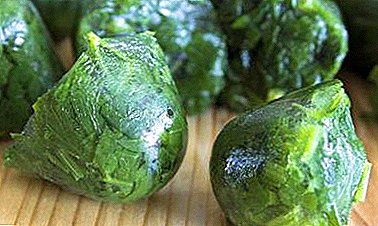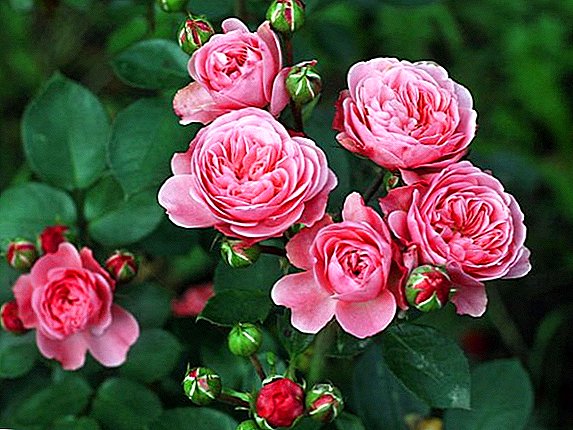 The International Garden Classification classifies all shrub roses, regardless of variety and type, to the Shrub group.
The International Garden Classification classifies all shrub roses, regardless of variety and type, to the Shrub group.
Proper cultivation of roses in the garden plots requires compliance with the rules of cultivation. Consider what features have spray roses and what are the best varieties of color known.
Botanical features of spray roses
It is known that the progenitor of these roses - domesticated dog rose. They are made by combining varieties and hybrids. 
Learn more about the varieties of roses, what shape and color these plants can be.
Home spray rose has the following botanical features:
- The height of the bush can vary from 25 cm to 3 m. The shape can be sprawling or pyramidal.
- In the bushes there are two types of shoots: primary and annual. They can be prickly or completely without thorns.
- The leaves have an elliptical shape with torn edges.
- Peduncles reach lengths up to 80 cm.
- The flowers are large, sometimes they can grow to a diameter of 18 cm. The color and shape may be different. They can be single or collected in inflorescences.
- In addition to the color of flowers differ aromas.
- The number of petals can vary from 5 to 150 pcs.
- Forms are also different: flat, spherical, cone-shaped, peony and others.

Did you know? It is known that of all the natural variety of shades flowers never turn blue. However, today there are varieties that change color or combine several shades.
The best grades in color
Amateur flower growers appreciate different varieties of spray roses as much as professional designers. In addition to beauty and a large selection of shapes, aromas and colors, summer residents are attracted by fairly easy plant care and durability. Most often, these roses bloom from June to September, sometimes even re-formation of buds occurs over time.
Whites
"Claire Austin". Breed in England in 2007. 
- The bush grows to a height of 2.5 m. It has the shape of a circle.
- Branches can reach lengths up to 1.5 m.
- Flower pomponovidny terry. It blooms with pale yellow petals that become lighter as they open.
- The aroma is reminiscent of vanilla and meadow herbs.
- The bush is disease resistant.

- The bush grows to a height of 1.2 m. It is erect branched.
- Flower bowl-shaped terry. It consists of a center that is made up of small petals and a “crown” of larger petals. Initially, the color of the buds is soft apricot, then whitens.
- The aroma is strong, myrtle.
- The rose is able to tolerate frosts up to 20 ° C.
- The variety is resistant to leaf diseases.
Important! Having decided to plant bush roses on your plot, find out the depth of groundwater. Close proximity will negatively affect development and flowering. In this case, it is recommended to make a raised bed.
Red
"Piano Red". The variety was bred in Germany in 2007. 
- The bush grows to a height of 1.3 m. The stems are large, sometimes the diameter reaches 2 cm.
- The flower is spherical at first, and then the cup-shaped middle is densely stuffed. Petals terry. The diameter reaches 11 cm.
- In the inflorescences may be present up to 8 roses.
- The aroma is light.
- Variety resistant to some diseases.
- It blooms until late autumn.

Get to know the best varieties of ground cover roses for your garden, and learn about their planting and care.
- The bush grows in height to 2 m. Stalks have no thorns.
- The flowers are large, terry crimson color. The diameter reaches 10 cm.
- Up to 5 roses may be present in the inflorescences.
- A strong fruity aroma.
- The variety is frost resistant and does not get sick.
- It blooms a couple of times during the growing season.
Pink
"Boscobel". English rose, which is endowed with a large number of advantages compared to other representatives. It was withdrawn recently, in 2012. 
- The bush grows to a height of 1.2 m. The shape is erect. On the stems there are small thorns.
- The flowers are large, they can be up to 80 petals, terry salmon-pink color. Deep rosette cup.
- In the brush there is up to 5 flowers.
- The aroma is strong.
- The variety is very rarely affected.
- It blooms several times during the growing season.

- The bush grows to a height of 1.2 m. The shape is erect.
- The flowers are large, reach 15 cm in diameter.
- Cup goblet.
- In the inflorescence there is up to 5 colors.
- The aroma is saturated with a raspberry flavor.
- The variety is resistant to diseases.

- The bush grows to a height of 1.2 m. It is spreading with soft hanging shoots.
- The flowers are simple, consisting of 5 petals, reach a diameter of 2.5 cm in diameter, but there is a huge variety on the bush.
- Muscat flavor.
- The grade practically does not hurt.
- Blossoms continuously until the first frost.
Did you know? The shoots of the largest spray roses in the world occupy an area of 740 square meters. m, it is equal to three tennis courts. Record holder was planted in 1885 in the United States.
Yellow
"Sphinx Gold". Hailing flowers from the Netherlands. Launched in 1997. 
- The bush grows to a height of 1.2 m.
- The flowers grow one by one on the stem, reach 8 cm in diameter. Each has up to 40 petals.
- The cup is non-standard, refined.
- The aroma is pleasant.
- The variety is resistant to diseases.
- Blossoms several times in a period.

- The bush grows to a height of 3 m. It is formed from strong-growing branches.
- Flowers semi-double with wavy petals. The diameter of the flowers is up to 11 cm. Collected in inflorescences of 5 buds.
- The aroma is light, pleasant.
- Flowering is long and passes by waves of different power.
Orange
"Lambada". Breed in 1992 in Germany.
- The bush grows to a height of 1.5 m. It is powerful and branched.
- The flowers are large, terry. Flower diameter up to 9 cm. Petals have an uneven edge.
- The aroma is pleasant, barely perceptible.
- Variety resistant to weather and moods.
- It blooms continuously until the first frost.

- The bush grows in height to 1 m.
- The flowers are copper-orange, terry. Flower diameter up to 10 cm. Peduncles tight and straight.
- The buds are average.
- The variety is not susceptible to diseases, it is possible only at an adverse time.
- It blooms twice a year.
You should also read about how roses can be useful for human health.
With black or brown flowers
"Black Prince". Bred in the UK in the second half of the XIX century. Due to the fact that the petals are darker at the edges, a certain effect is created. 
- The bush grows in height to 1,5 m. Shoots with a small amount of thorns.
- Shrub rose flowers are large, terry, each with up to 50 petals. The diameter of the flower is about 8 cm.
- The aroma is strong, there are wine notes in it.
- The variety does not get sick and does not react to temperature changes.
- Blossoms with proper care twice.

- The bush grows in height to 1.2 m. The form is upright sprawling. Spikes a bit.
- The bud is small, densely double and cup-shaped. The diameter does not exceed 10 cm. The tips of the petals are pointed.
- The aroma is weak, barely perceptible.
- The variety is resistant to rain and after them the flowers do not lose their shape.
- Blooms profuse and continuous.
Important! In order to shrub rose pleased maximum number of flowers in the future, in the first year of flowering buds are removed at the initial stage of development.
Combining multiple colors
"Variegata di Bologna". Breed in Italy in 1909.
- The bush grows to a height of 3 m. The variety is strong and produces many shoots.
- The flower is white with purple stripes. Diameter does not exceed 5 cm.
- The aroma is strong.
- The variety is not affected by powdery mildew and black spot.
- Single bloom.

- The bush grows to a height of 2.5 m. The shoots are flexible.
- The flower is red with white stripes. Flowers terry. Diameter does not exceed 10 cm.
- The aroma is pleasant.
- Variety resistant to frost.
- Bloom several times a year.
Features care for shrub roses in the garden
Shrub rose needs little care. The landing site should be light, protected from drafts, and the soil should be loose and nutritious. Saplings are allowed to be planted in spring until mid-May or in autumn until frost.
Before planting, the roots are shortened to a living place and soaked in warm water, and the shoots are cut to a living bud. Always hold the autumn pruning, shortening shoots and removing damaged branches. With the onset of cold weather, the bush is tucked up, covered with peat from above.
Roses are drought-resistant, they do not like waterlogging of roots. It is necessary to do watering rarely, but plentifully, while trying not to fall on the greens. The whole season the soil is loosened, in spring and early summer - compulsory feeding with a slurry solution or a special complex for roses.
As you can see, today there are many names of shrub roses that grow in any climate. Since they are unpretentious in care, the main choice is the definition with color.


